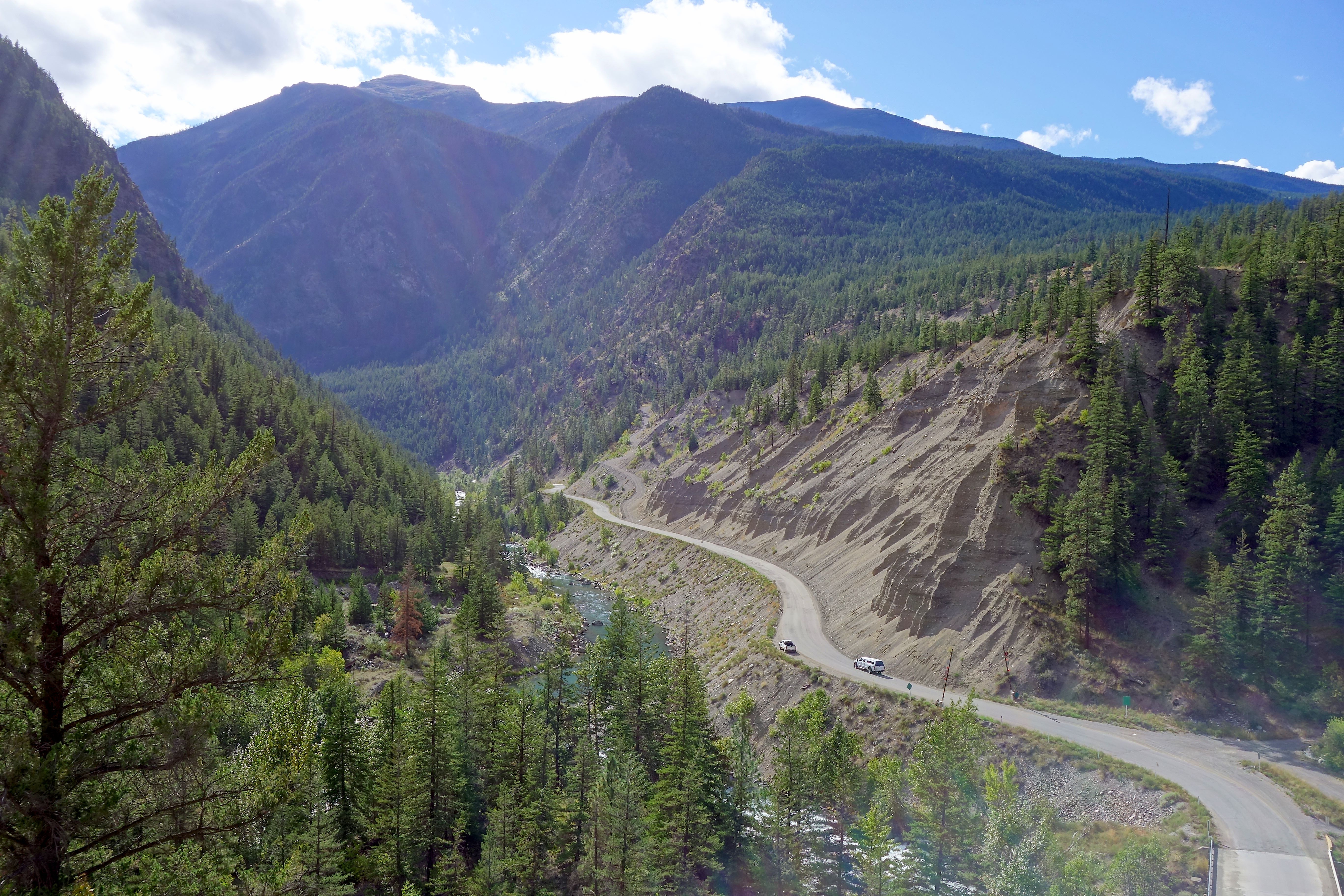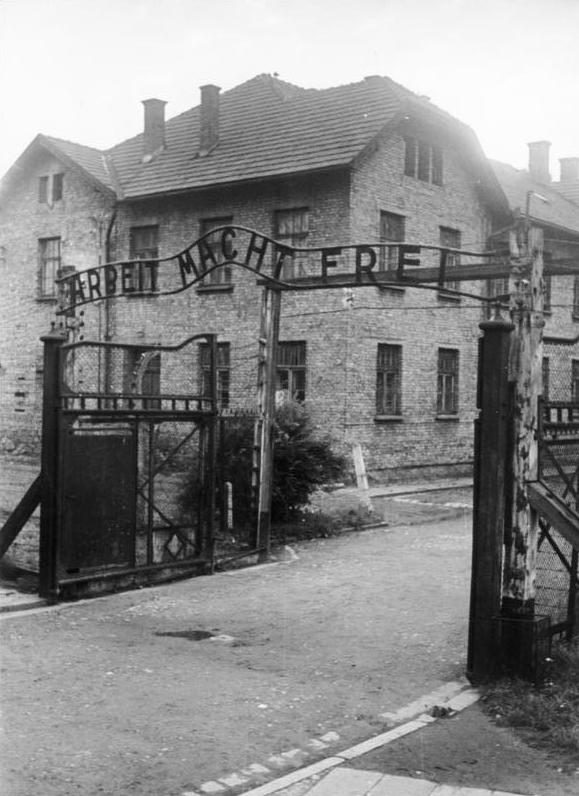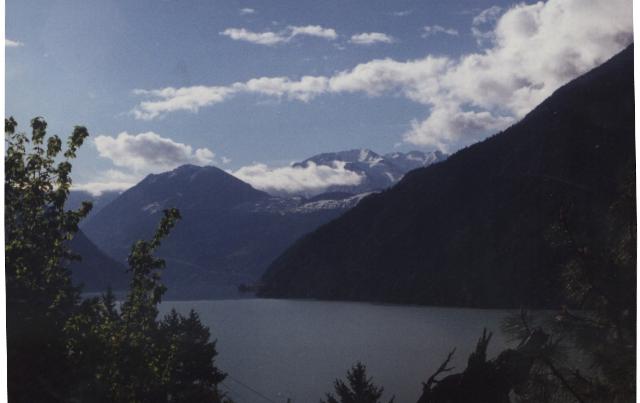|
Neal Evans
Neal "Curly" Evans (c. 1888–1945) was a freight industry entrepreneur in the Bridge River–Lillooet Country of the Interior of British Columbia, Canada. He acquired a reputation in that region for his enterprise, daring, and personality. Evans was born in the Dakotas and came to the Cariboo as a boy. His nickname derives from the curly, dark hair of his youth ("a mass of raven locks"), although later in life he was balding. His freighting career spanned the age from jerk-line times on the Cariboo Road to bush piloting, instructed by no less than Ginger Coote, who pioneered flying in the Bridge River and Fort St. James areas of BC. Around 1910, Evans was employed by the BC Express Company (formerly Barnard's Express) out of Ashcroft, British Columbia. He was also, like many others in this region, a cowboy as well as a miner. As gold extraction began to boom into the Bridge River Goldfields, Evans was one of the many who started freighting operations to supply the mines ... [...More Info...] [...Related Items...] OR: [Wikipedia] [Google] [Baidu] |
Bridge River Country
The Bridge River Country is a historic geographic region and mining district in the Interior of British Columbia, Canada Canada is a country in North America. Its ten provinces and three territories extend from the Atlantic Ocean to the Pacific Ocean and northward into the Arctic Ocean, covering over , making it the world's second-largest country by tota ..., lying between the Fraser Canyon and the valley of the Lillooet River, south of the Chilcotin Plateau and north of the Lillooet Ranges. "The Bridge River" can mean the Bridge River Country as opposed to the Bridge River itself, and is considered to be part of the Lillooet Country, but has a distinct history and identity within the larger region. As Lillooet is sometimes considered to be the southwest limit of the Cariboo, some efforts were made to refer to the Bridge River as the "West Cariboo" but this never caught on. Though essentially consisting of the basin of the Bridge River and its tributaries, the Br ... [...More Info...] [...Related Items...] OR: [Wikipedia] [Google] [Baidu] |
Seton Lake
Seton Lake is a freshwater fjord draining east via the Seton River into the Fraser River at the town of Lillooet, about long, in area and lies at an elevation of . Its depth is . The lake is natural in origin but was raised slightly as part of the Bridge River Power Project, the two main powerhouses of which are on the north shore of the upper end of the lake near Shalalth. At the uppermost end of the lake is the community of Seton Portage and the mouth of the short Seton Portage River, which connects Anderson Lake on the farther side of the Portage to Seton Lake. The Seton Portage River is the main source of natural inflow to Seton Lake, and is primarily fed by Anderson Lake but also by Whitecap Creek, which has its origin on the east slopes of Whitecap Mountain, the highest in the Bendor Range, and by Spider Creek, which has its origin on the north slopes of an unnamed summit to the south of Seton Lake, which happens to be the highest of the Cayoosh Range which lines th ... [...More Info...] [...Related Items...] OR: [Wikipedia] [Google] [Baidu] |
1945 Deaths
1945 marked the end of World War II and the fall of Nazi Germany and the Empire of Japan. It is also the only year in which nuclear weapons have been used in combat. Events Below, the events of World War II have the "WWII" prefix. January * January 1 – WWII: ** Germany begins Operation Bodenplatte, an attempt by the ''Luftwaffe'' to cripple Allied air forces in the Low Countries. ** Chenogne massacre: German prisoners are allegedly killed by American forces near the village of Chenogne, Belgium. * January 6 – WWII: A German offensive recaptures Esztergom, Hungary from the Russians. * January 12 – WWII: The Soviet Union begins the Vistula–Oder Offensive in Eastern Europe, against the German Army. * January 13 – WWII: The Soviet Union begins the East Prussian Offensive, to eliminate German forces in East Prussia. * January 16 – WWII: Adolf Hitler takes residence in the ''Führerbunker'' in Berlin. * January 17 ** WWII: The Soviet Union occupies Warsaw, Polan ... [...More Info...] [...Related Items...] OR: [Wikipedia] [Google] [Baidu] |
1880s Births
Year 188 (CLXXXVIII) was a leap year starting on Monday of the Julian calendar. At the time, it was known in the Roman Empire as the Year of the Consulship of Fuscianus and Silanus (or, less frequently, year 941 ''Ab urbe condita''). The denomination 188 for this year has been used since the early medieval period, when the Anno Domini calendar era became the prevalent method in Europe for naming years. Events By place Roman Empire * Publius Helvius Pertinax becomes pro-consul of Africa from 188 to 189. Japan * Queen Himiko (or Shingi Waō) begins her reign in Japan (until 248). Births * April 4 – Caracalla (or Antoninus), Roman emperor (d. 217) * Lu Ji (or Gongji), Chinese official and politician (d. 219) * Sun Shao, Chinese general of the Eastern Wu state (d. 241) Deaths * March 17 – Julian, pope and patriarch of Alexandria * Fa Zhen (or Gaoqing), Chinese scholar (b. AD 100) * Lucius Antistius Burrus, Roman politician (executed) * Ma Xiang, Ch ... [...More Info...] [...Related Items...] OR: [Wikipedia] [Google] [Baidu] |
American Emigrants To Canada
American(s) may refer to: * American, something of, from, or related to the United States of America, commonly known as the "United States" or "America" ** Americans, citizens and nationals of the United States of America ** American ancestry, people who self-identify their ancestry as "American" ** American English, the set of varieties of the English language native to the United States ** Native Americans in the United States, indigenous peoples of the United States * American, something of, from, or related to the Americas, also known as "America" ** Indigenous peoples of the Americas * American (word), for analysis and history of the meanings in various contexts Organizations * American Airlines, U.S.-based airline headquartered in Fort Worth, Texas * American Athletic Conference, an American college athletic conference * American Recordings (record label), a record label previously known as Def American * American University, in Washington, D.C. Sports teams Soccer ... [...More Info...] [...Related Items...] OR: [Wikipedia] [Google] [Baidu] |
Businesspeople From British Columbia
A businessperson, businessman, or businesswoman is an individual who has founded, owns, or holds shares in (including as an angel investor) a private-sector company. A businessperson undertakes activities (commercial or industrial) for the purpose of generating cash flow, sales, and revenue by using a combination of human, financial, intellectual, and physical capital with a view to fueling economic development and growth. History Prehistoric period: Traders Since a "businessman" can mean anyone in industry or commerce, businesspeople have existed as long as industry and commerce have existed. "Commerce" can simply mean "trade", and trade has existed through all of recorded history. The first businesspeople in human history were traders or merchants. Medieval period: Rise of the merchant class Merchants emerged as a "class" in medieval Italy (compare, for example, the Vaishya, the traditional merchant caste in Indian society). Between 1300 and 1500, modern accounti ... [...More Info...] [...Related Items...] OR: [Wikipedia] [Google] [Baidu] |
Vancouver Sun
The ''Vancouver Sun'', also known as the ''Sun'', is a daily broadsheet newspaper based in Vancouver, British Columbia, Canada. The newspaper is currently published by the Pacific Newspaper Group, a division of Postmedia Network. Published six days a week from Monday to Saturday, the ''Sun'' is the largest newspaper in western Canada by circulation. The newspaper was first published on 12 February 1912. The newspaper expanded in the early 20th century by acquiring other papers, such as the ''Daily News-Advertiser'' and '' The Evening World''. In 1963, the Cromie family sold the majority of its holdings in the ''Sun'' to FP Publications, who later sold the newspaper to Southam Inc. in 1980. The newspaper was taken over by Hollinger Inc. in 1992, and was later sold again to CanWest in 2000. In 2010, the newspaper became part of the Postmedia Network as a result of the collapse of CanWest. History The ''Vancouver Sun'' published its first edition on 12 February 1912. Th ... [...More Info...] [...Related Items...] OR: [Wikipedia] [Google] [Baidu] |
Bridge River Power Project
The Bridge River Power Project is a hydroelectric power development in the Canadian province of British Columbia, located in the Lillooet Country between Whistler and Lillooet. It harnesses the power of the Bridge River, a tributary of the Fraser, by diverting it through a mountainside to the separate drainage basin of Seton Lake, utilizing a system of three dams, four powerhouses and a canal. Discovery and original development The potential for the project was first observed in 1912 by Geoffrey Downton, a land surveyor, visiting the goldfield towns in the area who noticed the short horizontal distance between the flow of the Bridge River, just above its impressive canyon, and the much-lower Seton Lake. It was fifteen years before this observation was put to task, and not until 1927 that a private company first bored a tunnel through Mission Ridge (also known as Mission Mountain), which separates the basins of the Bridge and Seton systems. This tunnel was completed in 193 ... [...More Info...] [...Related Items...] OR: [Wikipedia] [Google] [Baidu] |
Bralorne Mine
Bralorne ( ) is a historic Canadian gold mining community in the Bridge River District of British Columbia, some 130 km on dirt roads west of the town of Lillooet. Background Gold has been the central element in the area's history going back to the 1858-1860 Fraser River Gold Rush. Miners rushed to the Cayoosh and Bridge River areas looking for placer deposits, One named Cadwallader looked for the outcroppings on the creek that is now named for him and turned out later to be the site of the richest hard-rock veins in the region. Early exploratory parties of Chinese and Italians in the upper Bridge River basin were driven out by Chief Hunter Jack, who himself had a secret placer mine somewhere in the region, believed to be in upper Tyaughton Creek. and whose big-game hunting territory this also was. During the 1870s Hunter Jack began to invite chosen prospectors into the valley, and ran a ferry across the Bridge River that virtually all entering the region had to cross. Amon ... [...More Info...] [...Related Items...] OR: [Wikipedia] [Google] [Baidu] |
Shalalth
Shalalth and South Shalalth are unincorporated communities on the northern shore near the western end of Seton Lake in the Squamish-Lillooet region of southwestern British Columbia. The localities are by road about northwest of Lillooet, but only by rail. First Nations The word Shalalth (pronounced Sha-LATH and spelled Tsal’álh in St'at'imcets, the Lillooet language) means simply "lake" or, particularly, ''the'' lake, meaning Seton Lake. Indigenous peoples form the majority of the population in the valley and in the Shalalth environs, which is one of the main communities of the Seton Lake First Nation Band of the St'at'imc (Lillooet) Nation. A First Nations school, small timber mill, and various small businesses operate. In 1990s, the Seton Lake First Nation built a new residential subdivision named Ohin, further east than the traditional Shalalth rancherie area (beginning at the base of the Mission Mountain Road to a few coves east). The name Ohin, pronounced ''OO(kh)win ... [...More Info...] [...Related Items...] OR: [Wikipedia] [Google] [Baidu] |
Lillooet Country
The Lillooet Country, also referred to as the Lillooet District, is a region spanning from the central Fraser Canyon town of Lillooet west to the valley of the Lillooet River, and including the valleys in between, in the Southern Interior of British Columbia. Like other historical BC regions, it is sometimes referred to simply as The Lillooet or even Lillooet, (i.e. without meaning the town of the same name). The meaning of the name has changed since over time. During the gold rush and into the later 19th Century, the term Lillooet District was synonymous with the Lillooet Mining District and also the Lillooet Land District, which spanned east of the Fraser all the way to the North Thompson River. As development of that region proceeded the sense of "Lillooet District" for that area was abandoned, except in terms of reference to the Land District or the similarly shaped electoral district. The original Lillooet Country, or "Old Lillooet", lies in the valley of the Lillooet Riv ... [...More Info...] [...Related Items...] OR: [Wikipedia] [Google] [Baidu] |
Bridge River Goldfields
A bridge is a structure built to span a physical obstacle (such as a body of water, valley, road, or rail) without blocking the way underneath. It is constructed for the purpose of providing passage over the obstacle, which is usually something that is otherwise difficult or impossible to cross. There are many different designs of bridges, each serving a particular purpose and applicable to different situations. Designs of bridges vary depending on factors such as the function of the bridge, the nature of the terrain where the bridge is constructed and anchored, and the material used to make it, and the funds available to build it. The earliest bridges were likely made with fallen trees and stepping stones. The Neolithic people built boardwalk bridges across marshland. The Arkadiko Bridge (dating from the 13th century BC, in the Peloponnese) is one of the oldest arch bridges still in existence and use. Etymology The '' Oxford English Dictionary'' traces the origin of ... [...More Info...] [...Related Items...] OR: [Wikipedia] [Google] [Baidu] |



.jpg)

